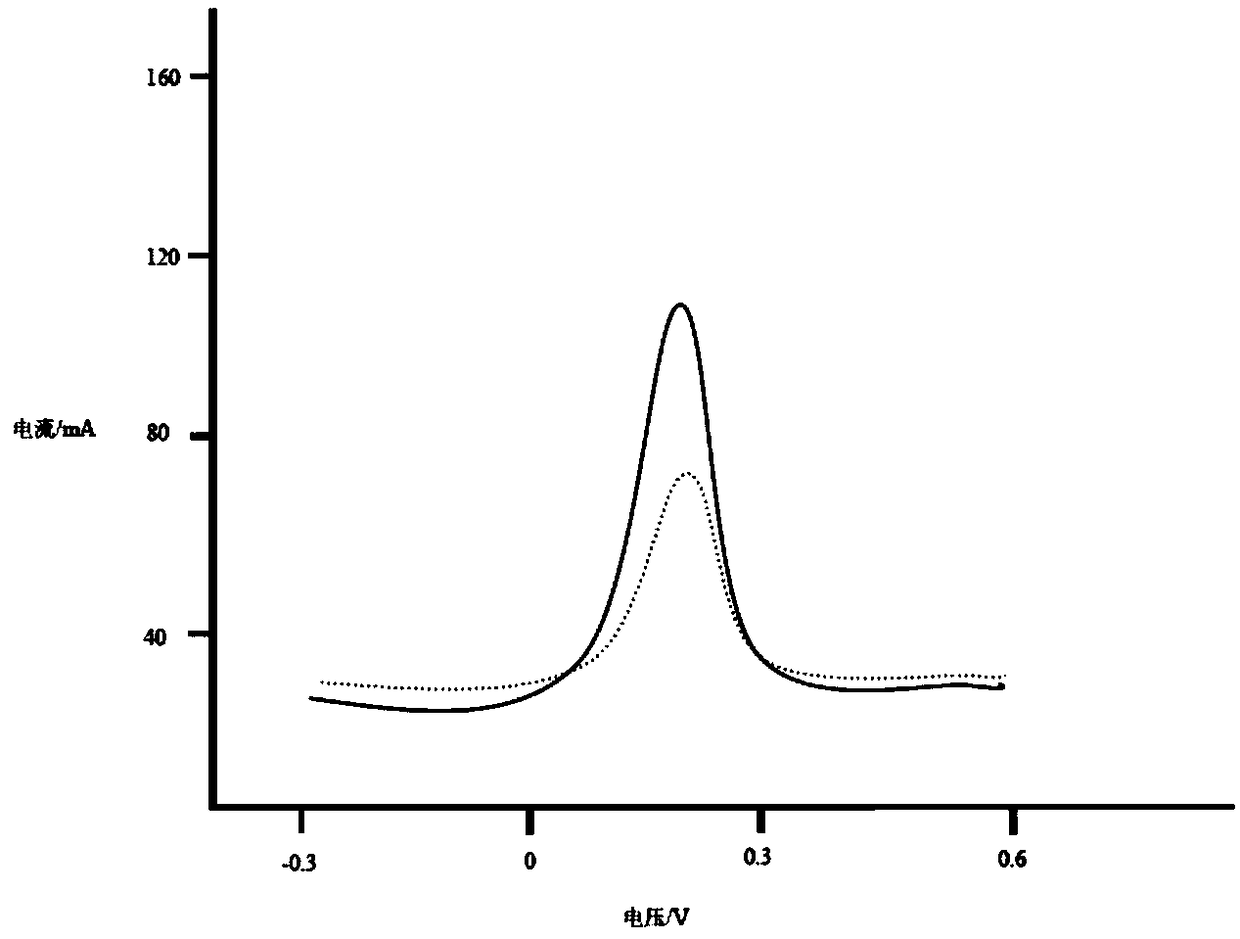Electrochemical chiral recognition detection method for lorazepam
A detection method and chirality technology, applied in the field of electrochemical detection, can solve the problems of complicated preparation of chiral columns, expensive instruments, and time-consuming analysis, and achieve enhanced stability and conductivity, rapid identification process, and improved sensitivity. Effect
- Summary
- Abstract
- Description
- Claims
- Application Information
AI Technical Summary
Problems solved by technology
Method used
Image
Examples
Embodiment 1
[0028] (1) Preparation of graphene: graphene oxide is prepared by Hummers method, take 1g graphene oxide, then add 3gNaBH 4 , with Na 2 CO 3 Adjust the pH to 8, heat in a water bath at 90°C for 1 hour, filter, wash repeatedly with ethanol and distilled water, dry in vacuum at 50°C for 12 hours, and set aside;
[0029] (2) Carboxylation modification of graphene: 2 g of the prepared graphene material was added to 20 mL of concentrated nitric acid, ultrasonically reacted for 10 min, filtered, washed several times with ethanol and distilled water, and dried to obtain carboxylated graphene.
Embodiment 2
[0031] Preparation of graphene: graphene oxide is prepared by Hummers method, take 2g graphene oxide, then add 6gNaBH 4 , with Na 2 CO 3 Adjust the pH to 8, heat in a water bath at 90°C for 3 hours, filter, wash repeatedly with ethanol and distilled water, dry in vacuum at 50°C for 24 hours, and set aside;
[0032] Carboxylation modification of graphene: Take 4 g of the prepared graphene material and add it to 20 mL of concentrated nitric acid, ultrasonically react for 15 min, filter, wash with ethanol and distilled water several times, and dry to obtain carboxylated graphene.
Embodiment 3
[0034] Preparation of carboxylated graphene electrode: ultrasonically disperse carboxylated graphene into an aqueous solution containing 0.5% Nafion, apply an appropriate amount drop-coated on the surface of an activated glassy carbon electrode, and dry under infrared light to obtain carboxylated graphene-modified glass carbon electrode;
[0035] Electrochemical modification of poly-L-leucine: a three-electrode system in which a carboxylated graphene-modified glassy carbon electrode is used as a working electrode, silver / silver chloride is used as a reference electrode, and a platinum electrode is used as a counter electrode is immersed in 0.1mol / L In an aqueous solution of L-leucine, L-leucine is electrochemically polymerized and modified on the electrode surface by cyclic voltammetry scanning to obtain a poly-L-leucine / carboxylated graphene / glassy carbon electrode, and the scanning voltage is - 0.2-1.5V, the scan rate is 100mV / s.
PUM
 Login to View More
Login to View More Abstract
Description
Claims
Application Information
 Login to View More
Login to View More - R&D
- Intellectual Property
- Life Sciences
- Materials
- Tech Scout
- Unparalleled Data Quality
- Higher Quality Content
- 60% Fewer Hallucinations
Browse by: Latest US Patents, China's latest patents, Technical Efficacy Thesaurus, Application Domain, Technology Topic, Popular Technical Reports.
© 2025 PatSnap. All rights reserved.Legal|Privacy policy|Modern Slavery Act Transparency Statement|Sitemap|About US| Contact US: help@patsnap.com

